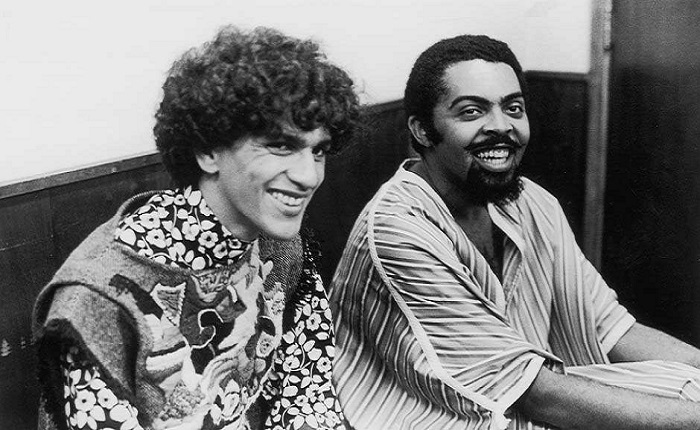The Military dictatorship in Brazil (1964-1985) remains one of the most terrible periods in Brazilian history. Marked by state-sanctioned repression, censorship, and an artificial economic transformation, this 21-year authoritarian regime began with a U.S.-backed military coup that overthrew President João Goulart. Framed as a defense against “communist threats” (never was), the dictatorship reshaped Brazil’s political landscape, leaving a legacy of trauma and inequality that persists today.
The roots of the Brazil’s dictatorship trace back to Cold War tensions and domestic instability. President João Goulart’s progressive agenda —including land reforms, nationalization of industries, and expanded workers’ rights—alienated conservative elites, foreign investors, and military leaders. His policies, dubbed Reformas de Base (Basic Reforms), were labeled communist by critics, fueling fears of a socialist takeover.
“The cost of living, which continues to rise, is imposing heavy and difficult sacrifices on everyone, especially the lower-income segments of society. Inflation erodes budgets and also destroys hopes. A bold, vigorous, and immediate action is necessary to implement measures aimed at stabilizing prices and protecting the value of the cruzeiro. Concrete measures to stimulate agricultural production, particularly of food staples, are eagerly awaited by all. The efforts and clear-sighted actions of the Government, along with all responsible sectors of society, must converge to ensure food security for the people and price stabilization, including through emergency measures, in the interest of social peace in Brazil”, Goulart said this in a speech during a ceremony at the Palácio das Laranjeiras.
On March 31, 1964, military factions, supported by the CIA and Brazilian business elites, launched a coup. Goulart fled to Uruguay, and Congress installed General Humberto Castelo Branco as president. The regime swiftly enacted Atos Institucionais (Institutional Acts), granting unchecked power to dissolve political parties, censor the media, and arrest dissenters. An authoritarian regime was rising in the largest country in South America. The infamous AI-5 (1968) suspended habeas corpus, shut Congress, and legalized torture. And this was just the beginning.
Repression and Resistance
The dictatorship’s security apparatus, including the DOI-CODI intelligence unit, targeted students, artists, journalists, and left-wing activists. Anyone could be a suspect. A network of informants began operating in different social spaces, composed of undercover agents and civilians. Fear spread throughout Brazil. Social movements and political organizations in countries like the United States and France denounced the repression of the Brazilian state, but with limited effects.
Over 434 people were killed or forcibly disappeared, while thousands endured torture in clandestine prisons. Priests were arrested, and employees of Brazil’s largest state-owned company, Petrobras, in the oil sector, were arbitrarily dismissed. Universities became battlegrounds. At University of Brasília (UnB), in the federal capital, four military invasions between 1964 and 1977 led to mass arrests, student shootings, and the disappearance of leaders like Honestino Guimarães.
Censorship stifled dissent: songs, plays, and newspapers were banned, while state propaganda promoted the regime’s “economic miracle.” Despite this, resistance persisted. The Diretas Já movement (1983–1984) mobilized millions demanding direct elections, while labor unions, led by figures like Lula da Silva, organized strikes against wage suppression.
Economic Growth and Inequality
The regime’s economic policies prioritized foreign investment and industrial growth. Under President Médici (1969–1974), GDP soared by 10% annually, fueled by infrastructure projects and export expansion—a period dubbed the Milagre Econômico (Economic Miracle). However, wealth concentrated among elites, while workers faced stagnant wages and eroded labor rights. The creation of the FGTS (severance fund) replaced job stability with employer-friendly flexibility, deepening inequality.
“In the outskirts of São Paulo, about 80% of households lacked a sewage system, while 54% had no access to a water supply. […]. Infant mortality rates also illustrate the deterioration of workers’ living conditions during this so-called ‘miracle’ period. For instance, while the infant mortality rate decreased by 30% between the 1940s and 1950s and by 32% in the following decade, in contrast, between 1960 and 1975, it increased by 37%.”
OLIVEIRA, S. M. F. Os trabalhadores urbanos e a ditadura militar. Revista de Administração Pública, Rio de Janeiro, v. 21, n. 2, p. 2436, abr./jun. 1987.
This growth also hinged on reckless borrowing, leaving Brazil with a crippling foreign debt. By 1985, inflation hit 230%, exposing the fragility of the “miracle” and paving the way for neoliberal reforms in the 1990s.
Shadows of the Military dictatorship in Brazil
The 1985 transition to democracy, negotiated by military elites, ensured amnesty for human rights abusers — a controversial compromise that delayed justice. Recent efforts, like the 2012 Truth Commission, have documented regime crimes, yet few perpetrators faced trial 1011.
Economically, the dictatorship’s neoliberal leanings influenced post-1985 policies, widening social gaps. Culturally, its legacy lives in art and activism; films like I’m Still Here (2025) and memorials at sites like São Paulo’s DOI-CODI headquarters keep public memory alive.

“The amnesty bill was conceived at the end of the Geisel administration and sent to Congress at the beginning of João Figueiredo’s government. This amnesty, approved in 1979, would become the main clause of the transition to democracy. It had lasting effects that persist to this day, as will be seen in the final chapter. One could say that it resulted from a negotiation among political elites that, in some way, established a pact marked by conciliation, ultimately leading to the military’s impunity”, historian Carlos Fico said.
The Unfinished Struggle for Accountability
The Military dictatorship in Brazil exemplifies how authoritarianism corrodes democracy and deepens inequality. While Brazil has made strides in confronting this past, the fight for accountability and equitable development continues. As debates over the regime’s legacy persist, its lessons remain vital for safeguarding democratic freedoms today.
References
OLIVEIRA, S. M. F. Os trabalhadores urbanos e a ditadura militar. Revista de Administração Pública, Rio de Janeiro, v. 21, n. 2, p. 2436, abr./jun. 1987.
FICO, Carlos. História do Brasil Contemporâneo. São Paulo: Editora Contexto, 2019.
How to cite this article
CARVALHO, Bruno Leal Pastor de. Military dictatorship in Brazil: a history of violence (article). In: Café História. Available at: https://www.cafehistoria.com.br/brazils-dictatorship-history-of-violence/. Posted on 15 Feb. 2025. ISSN: 2674-5917.


